Text
CB things
Now that Singapore is finally moving into phase 2 after months of circuit breaker – cb for short (7 April – 19 June), there are so much excitement to look forward to wheeeee! But then again, this period of circuit breaker has really been an unprecedented one for Singapore. A similar pandemic crisis would be in 2003 with SARS when I was around four… hardly old enough to remember anything :/ So in light of our current state of circuit breaker before we can finally a semblance of the life of before covid-19, let me digitally immortalised my memories of what some just-cb-things I’ve experienced in the past two months :’)
1. No more awkward ‘da-bao, please’
One of the most significant parts of our cb life is that there is no more dining in F&B establishments T.T Pretty depressing, but totally understandable. This makes for all the food that are purchased to be ‘da-bao’, which means to take away, by default. Having been saying ‘da-bao’ to indicate that not eating in for my entire existence, signifies the epitome of awkwardness when I say ‘da-bao, please’ by habit during the cb period when it’s already the default by law /facepalm/ Hey but on the bright side, it’s not only patron who do this silly habit, but also the food vendors as well. I’ve had more than a few hawker aunties and uncles asking me whether I want to ‘da-bao’ hehe. Now that phase 2 is kicking in, asking to take-away your meal is perfectly understandable so – goodbye awkward ‘da-bao, please’!
2. BUBBLE WRAP chaos; online shopping!
With only the essential services and F&B stores open, literally all our other products can only be bought online. Think all those short trips to the bookstore just to replace a pen, makeup/skincare products from a particular non-drugstore brands, electronics, clothing, etc. I have seriously taken all these for granted :( Fortunately for the internet now more than ever, we managed to get most of the stuff online yey! There was even a week where these parcels would just come at least once every day. And though we ordered the products ourselves, there’ll still be that element of excitement to check if the parcel is yours or just for some other family member oof. Pretty lame but those were some of the most exciting moments of cb :’) Now I truly understand why dogs get so excited when the mail man comes along hehe And sincerely apologies to the environment but those bubble wraps to secure the parcels really make my day – I’m literally addicted to popping them mindlessly while watching my drama heh
3. Get to know your family even better~
Since my family doesn’t really do grocery shopping as a household – we would grab our own supermarket stuff along the way home from school or work usually, this cb period has really allowed me to understand my family’s preferences a lot better. Not only in terms of this, but also having to get food deliveries together to save delivery costs really pushed us to our limits. This is especially since we are all so varied T.T Ultimately, we will compromise to one another and take turns choosing the restaurants for meals! The fact that we have so many meals together during cb period helps since we can’t go out on weekends to meet other people anyway.
5. Overgrown plants in a ‘post-apocalyptic’ neighbourhood
This is pretty much overlooked by most but in a garden city like Singapore where unkempt plants that have been left growing wildly for two months is practically unheard of until cb. Think of random tall grasses, wild dandelions and even mushrooms along the roadside curb! Also, in a city with SUCH high population density, it was quite a shocking sight how public spaces, usually filled with people, are entirely deserted. I could walk 5 mins to my nearest supermarket without meeting anyone at all… :o Pretty much like a ‘post-apocalyptic’ scene right out of a film.
6. Digitalised socialising as the new norm
The irony is that though most if not all of your family members are stuck at home with you, it gets pretty lonely because you’re not keeping up with your friends :( But the cb days has truly transformed the conventional way of socialising as we knew before. Taking the term digitalised socialising to a whole new level :’) Truly the thing of current times is zoom sessions, Netflix parties, skribbli.o, covidpoly (a covid adaption of monopoly deal), animal crossing and sooo much more!
7. New skills, new me??
Honestly this cb period was either a boon or a bane depending on each person. I mean, for the more privileged ones, this break is a long-awaited and very rare one to catch up on personal time and rest. But personally, the ‘freedom’ in terms of free time has brought me more stress than otherwise. This was exacerbated because of social media. It was especially toxic mentally because people were just sharing their entire cb life endlessly – baking, learning new instruments, cleaning their rooms, going for online courses, and much more activities. This established an idea of productive rest which may not be so mentally positive for many of us :( The constant need to be doing something ‘productive’ because you have all that free time anyway… But, what if you just wanted to slack around, watch some dramas, take naps all day long? VS other people who are upgrading their skills, widening the skills gap even further while you just… rested? :(
Afterall, each and everyone’s own cb experience is a unique one. Although everyone is suffering from the consequences of the pandemic, the extent of the suffer and struggles may not affect everyone the same. Regardless of how privileged we are, please let us not forget about those fighting the curve on the frontline, the hard effort of the invisible but extremely essential workers and those who are struggling mentally, physically, financially because of the ill consequences of the circuit breaker. :( Also, now that phase 2 has officially started (mostly to save our economy T.T) let us still continue to practise safety measures to keep ourselves, our loved ones and our country a healthy and safe one for everyone!~
0 notes
Photo
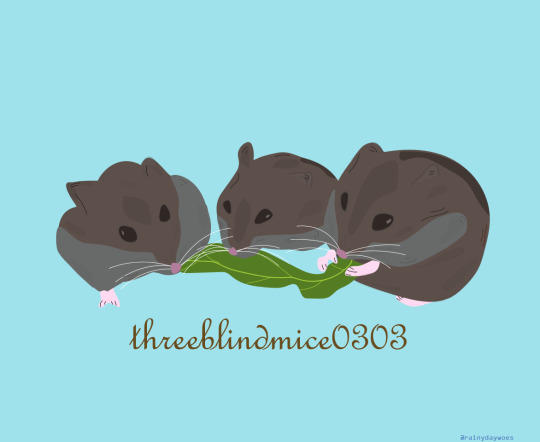


First attempt with Adobe Illustrator software! Since it’s circuit breaker period, Adobe has kindly allowed free license for NUS students and here I am, doing something productive and ‘actual’ then just snoozing and drama-ing my weeks away~
It was pretty difficult to start on Illustrator because there seemed to be so many functions and it was totally not idiot-proof enough for me T.T Thankfully they provided many useful videos for the various expertise levels (beginner for me, definitely!). Also, I used a very detailed YouTube tutorial by Pixel & Bracket which is an honest step-by-step guide with clear instructions on how to draw potted plants. I really learnt a lot of little tricks and hacks which guided me on creating the next two works.
The top piece is a new display picture for our hamster account, threeblindmice0303 on Instagram of three dwarf hamsters nibbling on a leafy vege while the other is of my syrian hamster, Waffles, enjoying her grain of rice :)
1 note
·
View note
Photo

Day 46 of Circuit Breaker —Unknowingly came across this view of waiting for the train to school in my gallery. Unconsciously missing the forgotten definition of normalcy.
1 note
·
View note
Quote
Nowadays she stays mostly indoors, talking to Despair, who is blind. She feels heavy and lethargic, and keeps the curtains drawn so people outside cannot see how gross she has become. Still, even though Anxiety claims to prefer the dark, I know she has a secret pair of wings which she's forgotten how to use. Deep in her heart, what she truly wants is to fly again—if only she could be sure of never falling.
What gives us our names, Alvin Pang
2 notes
·
View notes
Quote
Sometimes I think I catch glimpse of Beauty, usually in the oddest of places—at some small art gallery, in between old shop-houses, in the swaying branches of a raintree, a stone's throw away from sunset, in the shadow of cracked paint. You might have seen her yourself—she's small for her age, but very nimble, shy yet insatiably curious. She has an inner glow which makes it seem like she lights up the air around her. Just once, I managed to lock into her eyes—they were brights and sad and lone, and so shiny I could see any reflection in them. From that moment, I lost all desire to haunt her down. She could be anywhere by now.
What gives us our names, Alvin Pang
A very precious Singapore literature that I will always recommend to everyone. Pang’s prose poems weave timeless tales around character traits (such as Courage, Anxiety and in this case, Beauty) and breathe life into them through his personification.
What gives us our names by Alvin Pang
0 notes
Text
Dalgona Bandung
I’m sure many are very much aware of the wildly popular dalgona coffee drink that kept popping up everywhere over social media. As a non-coffee drinker, I wanted to try it out as well but the thoughts of not enjoying the fruits of my labour was pretty depressing so I decided on something dalgona-inspired instead of the actual coffee drink.
In case you haven’t heard of Bandung, it’s a drink created through the combination of water + condensed/evaporated milk + rose syrup. It has a really floral taste to it (with the rose syrup ...) so it’s not exactly everyone’s favourite but those who love it really love it :)
Anyways, I came across the list of dalgona-inspired drinks by TheSmartLocal and was intrigued by the bandung dalgona drink. Having extra whipping cream leftover from my baking endeavor earlier, I decided to try it out. It’s really simple since it requires just whipping cream + rose syrup (whip these together and add the foam to the milk). And, whew it is really aesthetically pleasing and also tasted great!

I love that these recipes not only sprinkle some much-needed variety in our mundane circuit-breaker lifestyle but are also really simple and easy to recreate.
If you’re not a fan of bandung/ can’t really get rose syrup near you, they also have a variety of other recipes (e.g. matcha, milo, oreo, milk tea) that you can try out for a non-coffee dalgona experience!
1 note
·
View note
Text
Pastel Rainbow Crepe Cake
A combination of the endless free time during circuit breaker and the semi-cake-sale ban in Singapore (at least before May 12) sparked the baking endeavors of many. Myself included :’) Hence, the creation of my first ever cake - a rainbow crepe cake.
This is great for aspiring bakers without ovens at home as you just need to panfry the crepe layers and combine it with whipped cream and voilà!
Even though this sounds really simple, the actual preparation and creation took me (a true beginner) about four hours. The end result is really pretty and it tastes decent too so I was very much satisfied :)
I followed this recipe by Cooking Tree on YouTube.
And here’s the ingredient list:
5 Eggs
65g Sugar
1g Salt
5g Vanilla extract (this was out of stock so I replaced this with vanilla flavouring)
250g Cake flour [I substituted this with plain flour - remove 2 tablespoons (28.3g) from 1 cup (128g) of plain flour and replace it with 2 tablespoons of cornstarch, then sieve it to combine it well]
625g Milk
90g Melted unsalted butter
Food colouring (To save $, I suggest getting only the primary colours and mixing them to create the secondary colours. Try not to mix too much at one go and add the colouring gradually into the mix to create the pastel colours)
Whipped cream (500g whipping cream + 50g sugar) - this ended up to be around 100g more than what I required but it depends on the amount you spread for each layer

Remember to make your crepe layers more thin (mine was thick and it didn’t taste as nice) :(
It was quite challenging to panfry the crepe layers initially as they kept folding in and split in the middle :( but as you go along, it’ll really improve so I suggest sacrificing a few to test things out~
3 notes
·
View notes
Text
NM2207, NM2219, NM2220 Module Reviews
It is the time of the year again: frantically searching for that one particular module suitable for all your needs – be it academic requirements, to boost your skills, your CAP or just a non-8am lecture slot you can never wake up for?
Whatever it is, I hope these reviews will help you find the module(s) for you 😊 Do just take note these are my personal thoughts and experiences which may differ accordingly to individuals.
Tip: I encourage all CNM majors, especially if you’re in year 1/2, to just look into the various 3k/4k modules you might want to take in the future because some of them might require pre-requisites of other modules. E.g. a particular 2K mod is required for a 3K mod which is a requirement for a 4K mod. Yes, so they accumulate, and if you don’t want to get the short end of the stick – do your research properly~ So enough nagging: here it comes~
NM2207 Module Review
NM2207 Computational Media Literacy aka the ‘coding’ mod of CNM. This mod teaches Javascript, CSS and HTML and is meant for web design. Even if you’re not planning on the game design track or have no coding knowledge at all, you can still consider this purely because of how useful this module is. The mod assumes zero coding background from everyone which really showed in the lecture/tutorial/homework materials that did a really good job in explaining concepts while challenging us to search up more info to enrich our learning.
There are no physical lectures but weekly online videos to watch (around 2.5 hours). I highly suggest you be on the ball and watch the videos before tutorials because we will to apply whatever the videos went through.
Here’s the grading breakdown:
15% Tutorial/participation: 3 hours tutorial sessions (usually 6-9pm for CNM students on internship to join as part of their MOOC courses), one coding challenge for each tutorial session that students (in pairs) can work together to complete. TAs will be around to help. The faster you finish the assigned work, the faster you can leave. :)
15% Midterm exam (either week 6 or 7): 1 hour, closed book pen and paper style.
20% Final exam (week 13): Closed book pen and paper style.
35% Final project: A solo project where you have to design and code an online application e.g. a game/ interactive story/ an animation/ etc from scratch. Don’t freak out yet! We are not expected to churn out a super highly-skilled app to attain decent grades – just something original and creative would do that trick. :)
15% Assignments: These were known as weekly homework and a major pain. We had to follow the assigned instructions to code the final products which are to be uploaded on our webpage by Saturday This was really difficult because some of them were really challenging and I had to email my TA constantly for help. :(
Personally, this was a very intellectually challenging module for me. Especially since I understand things related to coding rather slowly. It was also rather time-consuming; I think I spent around 10 hours weekly on this mod. In fact, I wouldn’t recommend taking this module if you think you’ll have a really packed semester (or just be prepared to use an S/U, in case?) Otherwise, I have to admit, it was really intriguing and super rewarding to finish all these seemingly-impossible tasks and to complete the module with a great end :)
Taken in: AY2019/20 Sem 2
Final Grade: B+
NM2220 Module Review
NM2220 Introduction to Media Writing is basically as the module name suggests – introduction to media writing. This module is super highly recommended for anyone who has an interest in doing writing as a career as it covers a range of writing: news media, both print and broadcast journalism, copywriting for advertisement, public relations, feature writing and writing for the web. It even covers topics like media law and ethics. Basically, whatever fundamentals of writing you think you might need for your career and perhaps even more.
Sounds a lot? Yes, actually this module is considered to be one of the more hardcore CNM 2K modules. Both lectures and tutorial require us to be on the ball constantly and I assure you there’ll definitely be a writing practice in every single session. Depending on your luck, you might even be called on in lecture to share your ideas. So, no random scrolling through Facebook for cat videos and whatnot. Lectures are, as per normal, 2 hours weekly while tutorials are pretty demanding at 2 hours weekly and require you to write on the spot.
I apologise as I cannot remember the exact breakdown but from what I can remember:
10% News angle: Find a local news article and develop 3 other news angle that have not been published before.
20% Feature writing: Write a feature story based on NUS student life with 3 original photographs and optional video.
15% Public release + planning of 4 social media posts: Write a press released based on a provided scenario and organisation (details to be developed by yourself) + 4 pseudo social media posts of 1 pre-event and 1 post-event post (including captions/ visual description) on Facebook and Instagram. And you don’t have to actually post it, just describe the posts.
15% Tutorial participation/ attendance
40% Final exam: Closed book pen and paper style. Three segments based on a single given scenario (mine was an accident by a hired car company outside school): 1. Broadcast journalism report (with details to be developed by yourself) 2. Two social media posts based on the accident 3. Two (?) feature story angles based on the accident.
Overall, I really enjoyed this module. Since I had zero experience in such media writing prior to this, it really provided me with the fundamentals that are pretty important in any career related to writing. Especially for people who consider doing media writing related work in the future, I really recommend you take up this mod to know whether you’re suitable/ whether this would be something you enjoy. :)
Tip: You have to either take this mod or NM2219 to take up certain 3K mods such as NM3219 (find out more on NUSmods).
Taken in: AY2019/20 Sem 1
Final Grade: A
NM2219 Module Review
NM2219 Principles of Communication Management is really good module for everyone to consider if they’re planning to head into PR-related field or to discover whether this field is something for you. The module is very comprehensive and covers various fields related to PR e.g. crisis management, issues management, forms and types of PR approaches. To be honest, this module was really rather dry for me with a lot of PR concepts and content. But I guess a redeeming factor is that the content is quite easy to understand and the workload for this module is rather little compared to NM2207 and NM2220. If you’re considering a 2K module that is good/ useful career-wise (the skills you learn in this module can be easily transferrable to a PR-related career) and also not too much on the workload, this is a pretty decent choice😊
30% Midterm exam (week 7): Closed book, 30 MCQs (not sure if this changes according to the lecturer). I would recommend to read the textbook readings as some of the questions made references to the definition and related stuff.
30% Final exam: Closed book, around 15 MCQs with 2 SAQs and 1 longer question split into various parts (based on a provided PR issue, answer the sub-questions to resolve the issue based on the PR steps).
25% Group project [Presentation (10%); Paper (15%)]: Research on a company with local influence that might have a potential PR issue/ is currently facing a PR crisis and come up with solutions for the issue.
5% Peer review
10% Class participation: Weekly tutorials that are 45-minutes each; mostly used for explaining certain concepts that are to be covered in your group report and for the tutor to check up on your group’s progress.
If you don’t mind a slightly dry module with quite a bit of content (that is rather simple to grasp) and are considering a PR-related field, you should really take up this module. Actually, even if you’re not going into PR, knowing some PR knowledge can be applicable in almost every job that requires human interaction/ brand reputation. So yes, don’t count this one out!
Tip: You have to either take this mod or NM2220 to take up certain 3K mods such as NM3219 (find out more on NUSmods).
Taken in: AY2019/20 Sem 2
Final Grade: A+
0 notes
Photo






These pictures from my family trip to Taiwan in 2018 to comfort my wanderlust soul during the current circuit breaker.
Take care, everyone!
#taiwan#travels#sky lantern#clouds#sunset#cats#road#beach#sea#sky#nature#tree#flowers#silhouette#photography#beautiful photos#scenery#wallpaper
9 notes
·
View notes
Text
Crash Landing on You: 5 North Korean Facts or Fiction?
Crash-landed in love with the inter-Korea romantic comedy, Crash Landing on You? Ever wondered how close the depiction of the South-Korean drama is to real-life under the North-Korean dictatorship? Wonder no more! Quench your curiosity as we explore 5 highlights of the drama that will make you exclaim – hurai ggajimala (take the frying pan off your head) – the North-Korean slang for “Don’t lie to me!”
Note: This article contains spoilers up to episode 13.
1. Defecting and accommodation censorship
Remember that nerve-wrecking scene when our leading lady, Yoon Se-Ri (Son Ye-Jin) was caught hiding in the kimchi storage during an accommodation censorship search? According to a North Korean defector, Kang Na-ra, these house searches were as common as a daily occurrence for houses near the borders. Having personally experienced it herself when she was defecting, Na-Ra added that her broker made her hide in the furnace fireplace. So yes, this is very much true!
However realistic the drama depicted of accommodation censorships, defecting from North-Korea is absolutely not as easy as stepping across a piece of wire that physical separates the two warring territories. Ask any North-Korean defectors of their arduous journey out of the authoritarian country and their heart-pounding accounts will have you on the edge of your seat. From paying up to thousands of dollars to brokers, hiding from constant vigilance to swimming across rivers while being shot by soldiers, each step of the defecting journey is fraught with the danger of losing their lives. Even after reaching South Korea, the defectors have to undergo a mandatory three-months long re-education at the settlement center, Hanawon (House of Unity).
I guess, since this is a rom-com K-drama after all, we can relent on this fantastical depiction and finally send our dearest heiress, Se-Ri, back to the South before she loses her beloved company!
2. Cars
Surely, we mustn’t forget to sprinkle in a (car) race-against-time scene for our leading man, Ri Jung-Hyeok (Hyun Bin), as he zooms off in a showy luxury vehicle with the famous traffic-stopping 729 car-plate to save Son Ye-Jin’s character during an accommodation censorship.
Foreign luxury cars are surprisingly not as uncommon as you would imagine in North Korea, albeit mainly seen in the capital, Pyongyang. According to a tour guide who frequently travels to the country, BMW’s, Mercedez Benz and the Audi, you name it, they have it. So this depiction of cars and traffic in the drama is true to a certain extent.
The more important question is – is this 729 car-plate number really as powerful as it seems? Instead of the number “729” which the drama adopts, car plates starting with “727” indeed receive the bows of traffic ladies and are granted with traffic-stopping access in North Korea. You must be wondering – why 727?? The number “727” represents the 27 July. To history buffs, does this date ring any bell? It’s the day that the Korean Armistice Agreement, which brought complete cessation of hostilities of the Korean war, was signed. And, for North Korea, this date represents the extremely important national holiday, the Victory Day. Hence, yes, I would count this as a realistic drama depiction of North Korean vehicles.
3. Division 11
The next puzzling question at the forefront of your mind that follows Jung-Hyeok’s heart-stopping revelation of Se-Ri as his fiancée must be – What in the world is Division 11??? Does it even exist in real life?
To save Se-Ri from the secret police, Jung Hyeok blurted out that the reason for Se-Ri’s lack of identification materials is because she belongs to the mysterious Division 11 – to which, the village ahjummas (aunties) responded with surprised gasps and muffled utterings amongst themselves. In the drama, Division 11 is a military unit of individuals who work undercover in South Korea. This fits perfectly into the plot as it accounts for Se-Ri’s uncommon hairstyle, dressing and most prominently, her Southern accent and slangs.
Unfortunately, the existence of Division 11 remains an unknown due to the lack of official documents. However, considering how one of the drama’s writers is a North-Korean defector with insider information on North Korean officials and their functions, there is room for valid suspicion that this division does indeed exist.
4. K-drama love
There are many reasons why Se-Ri was able to make it past the demilitarised zone, across the North-Korea border and into Jung-Hyeok’s house. Luck, determination, fate – whichever you choose. But if you’re a true fan of the drama, you have to agree that it was due to soldier Kim Joo Muk (Yoo Soo Bin)’s love for K-drama (and the tragic love story of Stairway to Heaven).
“No matter how far you go… Love returns.” Choi Ji Woo’s cameo brought tears in our (and Joo Muk’s) eyes as we recall the iconic scene of the wildly popular 2005 K-drama Stairway to Heaven. Too old a drama for your liking? For the North-Koreans, K-dramas are extremely hard to get access to. Believe it or not, some even risk their lives for this source of entertainment. North-Korean defectors shared that if the citizens were caught watching, they would face punishments such as hard labour, a jail term or even be shot to death. Despite such severity, there is still high demand for it. K-dramas are one of the limited windows through which North-Koreans peek through to understand life in the South that deviates from the national narrative by the dictatorship.
You must be wondering –how do North-Koreans go about getting their hands on such K-drama? Think the drama’s market merchant and her sneaky sale of foreign beauty products. North-Koreans usually buy illegally imported USB drivers with the K-drama saved in it from random ahjummas loitering around the marketplace.
The next time you complain about the slow buffering of your K-drama episodes, think of the risks and hardships North-Koreans have to go through just to get their hands on it.
5. Electricity cuts and train delays
Remember those satellite images of North Korea plunged into total darkness at night? That surprise by the Company Five soldiers at the constantly lit-up Seoul? True to the drama’s depiction, electricity is extremely rare in North-Korea and electricity cuts are merely constants of the everyday life. In fact, citizens receive electricity as rare as 2 hours a month! This irregular flow of electricity meant that there were generally no refrigerators and heating up an apartment with furnaces are the reality. A defector even pointed out that the scene of a village ahjumma riding the electric bicycle generator brought back precious memories and that almost every household had a similar machine to generate electricity during blackouts.
The inconveniences of the inconsistent electricity flow do not end there. The chaebol (conglomerate) heiress’ reaction to the ridiculous 14-hour train delay on the way to Pyongyang is one that most, if not all, Singaporeans who use the public transport can relate to. Surely this is false? Yes, this is indeed false. These delays not only last for merely 14-hours, but could go up to even a week! And the merchants that come running? They are known as the grasshopper merchants. Similar to what was depicted in the drama, these merchants sell daily essentials such as water, toothbrushes, soaps and food. An addition of the reality not reflected in the drama would be the ‘vinyl greenhouse’. Since train delays can last for a week or so, these ‘vinyl greenhouses’ provide warmth and accommodation for those willing to fork out the amount. Unfortunately for the citizens, train delays are considered a norm instead of a rarity and rage-tweeting or angered tagging of their train service providers on social media is certainly forbidden.
Although Crash Landing on You is based on unbelievable premises true to its genre of a fantasy rom-com K-drama, the drama’s depiction of life in North Korea presents its audience with a rare and largely accurate glimpse into the secretive life under the strict dictatorship. With its deviation from the usual representation of North Korea as a poor and harsh regime in the media, the simplicity of life and the relatability of the citizens portrayed bring about an unexplored and refreshing outlook on North Korea and its citizens. So, after reading these fact/fiction of Crash Landing on You how many times did you exclaim hurai ggajimala?
#cloy#crash landing on you#hyun bin#hyunbin#sonyejin#son ye jin#kdrama#north korea#south korea#rom-com
61 notes
·
View notes
Text
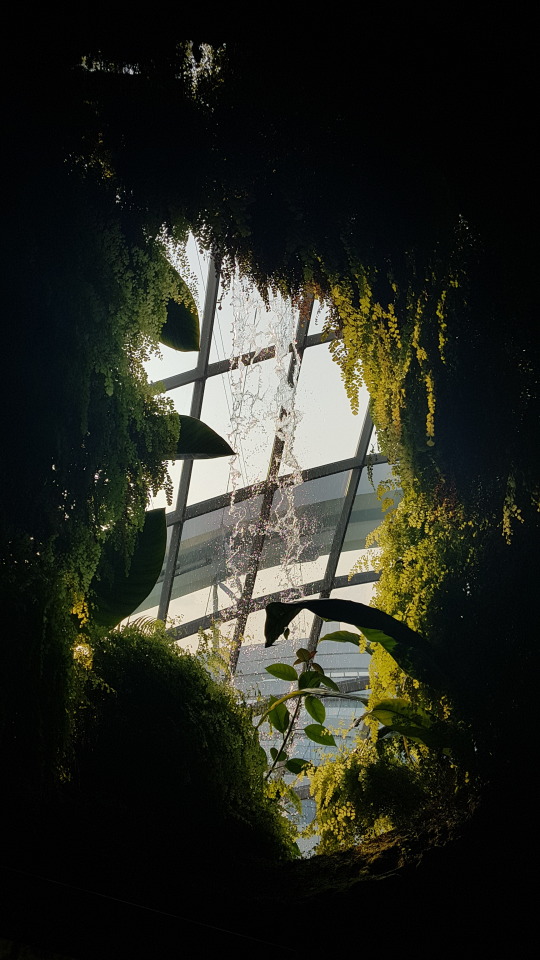

Singapore - Gardens by the Bay
Within the unknown
1 note
·
View note
Photo
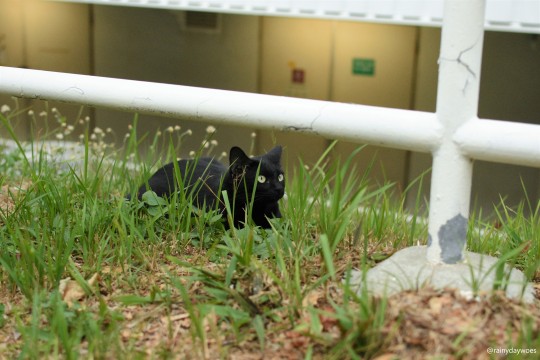
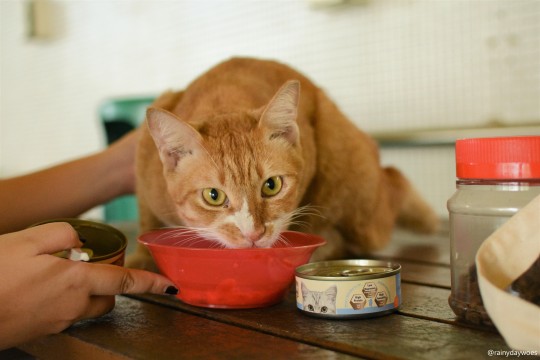
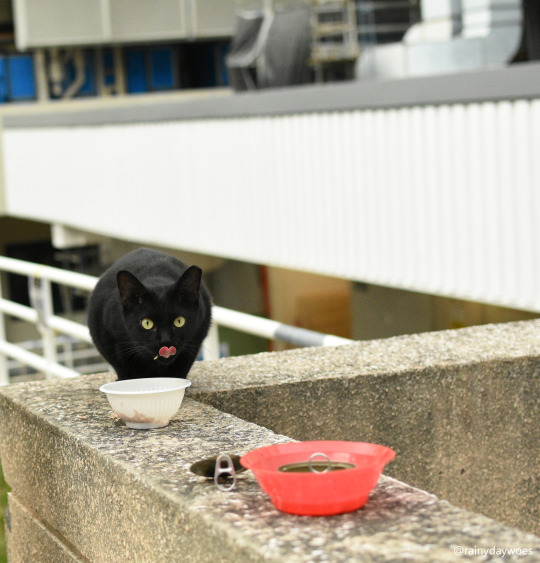
The cats, Toothless (black) and George (ginger), are stray community cats in the National University of Singapore. I took these shots while accompanying Ms Lisa Ong, a third-year NUS Cat Café volunteer feeder, on a Sunday feeding session. The NUS Cat Café is a student organisation in NUS that cares for the stray cats on the college’s campus. Toothless and George, both often seen in the Faculty of Engineering, are two of the seven community cats that the volunteer organisation cares for. Find out more about their passion and dedication that goes way beyond their feeding sessions at
https://nuscatcafe.wixsite.com/campuscats
1 note
·
View note
Text
Benjamin Kheng. Lovers forever.
17 Jan 20.
1 note
·
View note
Quote
I don't believe that you're somehow completed by romantic love. You aren't born half a person, doomed to drift through life unfulfilled until you find someone who can validate you. You're a whole person with a whole life, that you might choose to share with another person. Or you might not. Your body and mind is your own. Your happiness is your responsibility and your right.
Lucy Parker
Pretty Face
0 notes
Quote
Up close, it's beautiful. Two stories tall. He can't imagine how somebody was able to put together something like this so fast.
It's a mural of himself and Henry, facing each other, haloed by a bright yellow sun, depicted as Han and Leia. Henry in all white, starlight in his hair. Alex dressed as a scruffy smuggler, a blaster at his hip. A royal and a rebel, arms around each other.
He snaps a photo on his phone, and fingers shaking, types out a tweet: Never tell me the odds.
Casey McQuiston
Red, White and Royal Blue
0 notes
Photo

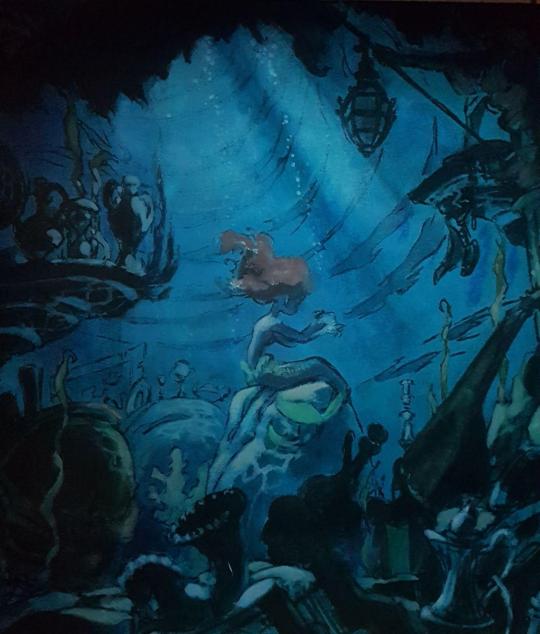
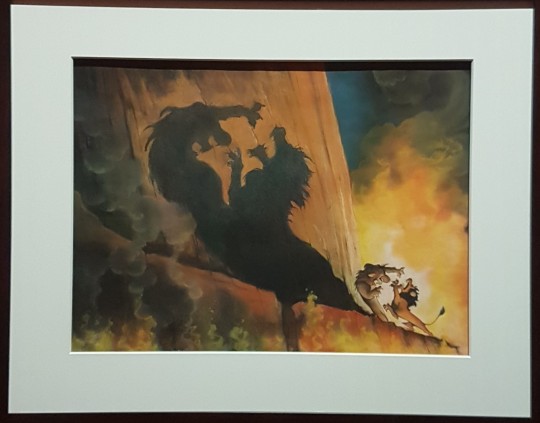



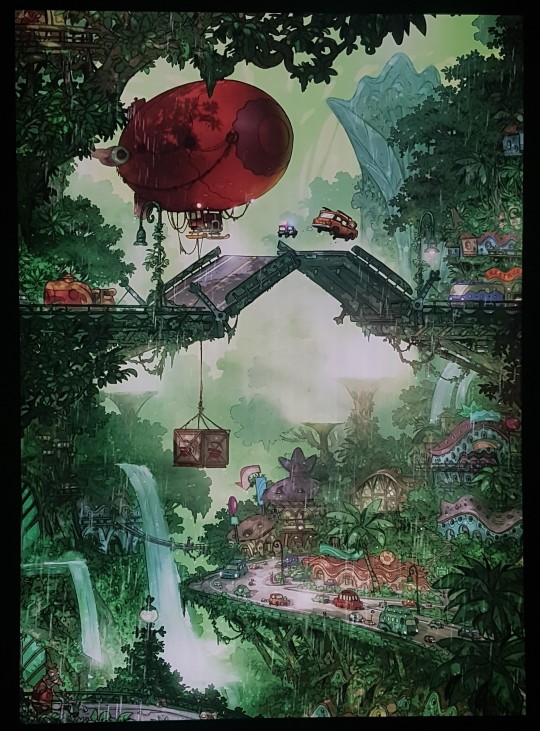
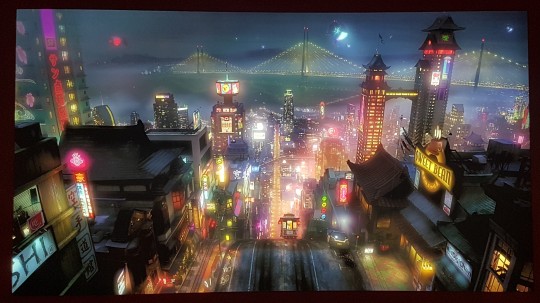

Truly a magical and awe-inspiring afternoon at the Disney: Magic of Animation exhibition in ArtScience Museum Singapore today! The exhibition really displayed the tenacity, hard work and refusal to lower standards of animation of those behind the many timeless classics that we love and grew up with. Even for those who do not know much about animation sequence and techniques, it is still an eye-opener with various hands-on and interactive activities that are suitable for the entire family :) From the simplest hand-drawn sketches to digitalised paintings, visitors are greeted with an inspirational understanding of how far Disney Animation has come these 90 years. Thank you, Disney, for making my childhood a magical one :’)
” All our dreams can come true, if we have the courage to pursue them ”
Elements of Animation displayed in the exhibition: Concept Art, Story Sketches, Model Sheet, Model, Maquette, Rough Animation Drawing, Clean-up Animation Drawing, Colour Key, Colour Script, Layout, Background Painting, Final Frame, Publishing Artwork
#artsciencemuseum#disney#disney animation#disney animated movies#singapore#mulan#lion king#zootopia#wreck it ralph#sketch#interactive#steam willie#big hero 6#the little mermaid
2 notes
·
View notes
Text
NUS Module Review (GEM) - GET1050 GER1000 GEQ1000
Hi! So here’s my first module review on the various General Education Modules (GEM) that I’ve taken so far :) currently I’m only a year two undergraduate at FASS in NUS, and I’ve only taken the ones allocated to me – GER1000, GEQ1000 and GET1050. (I have also taken GET1029 as a UE but since it is also philosophy introductory module, I’ll cover that in another review!)
As you may already know, all NUS students are required to clear the five pillars of GEM which are meant to enrich the student with different forms of thinking, knowledge and abilities beyond one’s own specialisation. The five pillars being Human Cultures (GEH), Asking Questions (GEQ), Quantitative Reasoning (GER), Singapore studies (GES) and Thinking and Expression (GET). *note that for Residential Colleges there might be replacement modules instead
Generally, all NUS undergraduates are allocated GER and GEQ and can choose from various modules from different faculties/majors to make up for the other pillars. For FASS students, however, we are allocated with GET1050 (previously GET1031A) which is computational reasoning.
For this review I’ll talk about what the module is about, the components that made up the grading and any relevant tips if I have any :) I wish to say that these are all my personal opinions and if you have any further questions, don’t hesitate to contact me!
GER1000 Quantitative Reasoning
GER1000 is a compulsory stats module for all NUS undergraduates. The module has a flipped classroom style which means that all lectures are based online. Students are required to watch and learn from the videos (which are pretty lengthy) before attempting the tutorial questions and online quizzes. The lecturers for the videos change accordingly to the topic and I had some difficulty understanding some of the videos due to their accents. Thankfully, there are slides and speakers’ notes provided so that helped for reference.
Tutorials are once every two weeks and I would suggest for one to attempt and complete the assigned tutorial work as tutorial participation and attendance make the final grade. In addition to online quizzes and tutorials participation/attendance, there is also a group project and final examination. For the group project, students are to choose from the various case studies provided and provide data analysis and present it in a ~10 mins presentation with Q&A. And, for those wondering, your groupmates are allocated so it all depends on your luck :/ For the final paper, it is a closed-book examination but there will be ample time for you to complete it as (if I remember correctly), it is 2 hours long with only 30+ MCQ.
Tip: Do take note that on NUSmods (which is a website NUS students generally use to view available modules/ lectures and tutorial slots/ plan their timetable in general) the module code for students taking it in hall is GER1000H. This “H” refers to hall, and NUSmods will show you the tutorial slots available within hall. Generally, I would advise students to go for tutorial slots within hall compound as it is definitely more convenient.
Also, ask around from your seniors if they have any past year papers for you to practise with for the final examination, except from some that are out of syllabus, the questions styles are usually repeated.
Generally, the bellcurve is pretty steep and many FASS students around me s/u this. However, don’t give up so easily! The group project and final exam can really help one do well as well :)
Taken in: AY2018/19 Sem 1
Final Grade: B
GEQ1000 Asking Questions
GEQ1000 is also a compulsory module for most NUS undergraduates. I’m not too sure on this but I think some of my friends from RC took some replacement modules instead of this. This module is a CS/U module which means it’s pass-fail by nature so it’ll contribute to one’s completed module credits but not one’s Cumulative Average Point (CAP). This is also quite a low-effort module so I would suggest for one to maximise this. Personally, I overloaded with another module so I could take advantage of this.
Similar to GER, GEQ1000 is also a flipped classroom style with online lectures. The module consists of lectures that spanned across the various majors. There was philosophy, user-design, computational thinking, economics, physics and engineering. The module introduces various methods of questioning, thinking and solving problems based on the differing approaches of the various disciplines. Students are encouraged to watch the lecture videos before going for the tutorials, which are once every two weeks. Tutorial participation and attendance contribute to your final grade. However, because there are SO many components and subcomponents, I didn’t really bother with active tutorial participation that much (on top of that, I had an 8am tutorial so I wasn’t really in the mood…)
Other than tutorial participation and attendance, there is online forum posting, online quizzes, wallet-designing assignment, origami folding exercise to be handed in during one of the tutorials and a final reflection paper. As this is a CS/U module, most people do not put in a lot of effort. And, there is really no need to if you’re tactical about sharing your precious time studying for your other modules. I’ve heard that some people would forgo e.g. the wallet designing assignment because they calculated and decided they can pass even without it.
Personally, I did not really think the tutorials were that interesting or critical in my understanding of the module. However, I genuinely enjoyed myself learning about the various topics that I wouldn’t usually be exposed to due to my faculty and major. So I guess, I’m thankful for knowing more about game theory/ pancake flipping and many more other theories which I haven’t come across before this.
Tip: Add “H” behind the module code to search for tutorial slots within your hall in NUSmods for your own convenience :)
Taken in: AY2018/19 Sem 2
Final Grade: S
GET1050 Computational Reasoning
The “GET” pillar is usually not allocated and students are free to choose a module of their choice to clear this pillar EXCEPT FASS students. As the name suggests, this module is about using computational methods of thinking to solve issues. And the million dollar question comes up – does it involve coding? – yes, yes it does and teaches us VBA (s a v e m e T.T). In case you’re panicking and shaking in your pants, don’t worry. Even though this sounds pretty much a nightmare for most arts students, this module (which is revised from the earlier GET1031A Computational Thinking) is catered for FASS students and designed by a philosophy lecturer. Even though I practically struggled through it, I can really tell the effort made to simplify what might be very daunting to arts students.
This module is very new – in fact, my batch is the first to take it. This also means that a lot of calibrating and adjustments were made to the grading components, assignments and even the lecture videos. One really remarkable point I have to make is that I really, genuinely appreciate the effort that the lecturer puts into this module and understanding the concerns of students. Jonathan, the lecturer, encourages all the 800 students enrolled in the module to send an introductory email to him for him to get to know us better. On top of that, students are required to do a pre-module survey for him to understand our level of ability regarding coding and whatnot. (He shared that most students replied that we had ZERO knowledge of it, which is sadly the truth) Moreover, he also had weekly clinic sessions to address queries face-to-face and a telegram group for the ease of communication among the students, TA, and himself. This is a true testament of a lecturer who tries his best at understanding the needs and issues of the students venturing on the unchartered terrain of computing/coding :’) very admirable
Not going to lie, this module was very helpful and really considered the general beginner status of many FASS students. This module also has online lecture videos and tutorials once every two weeks. The lecture videos were very helpful and the learning curve is pretty gradual. However, many students feedbacked that there was just too much work to be put into this supposedly level 1 module. The components included online quizzes, tutorial attendance and participation, forum posts, survey participation bonus, a group project with four checkpoints (aka submissions) and a final paper. PHEW…even writing it all down was serious business.
Generally, I was alright with most of the components. Online quizzes were once every two weeks, deadlines were also adjusted if Jonathan needed more time to produce and upload the lecture videos. Tutorials were very interesting and helpful in applying whatever we learnt in lectures to real-life situations that revealed moral/ethical issues regarding the mere use of computational thinking. Forum posts were kinda irritating as there PRE as well as POST forum posts that were graded very critically. But what really ticked me off was that the percentages for the various checkpoints were just too little for the amount of effort my groupmates and I had put in. Students are to choose from two datasets and provided with a dilemma to come up with various criteria/components to find the balance between maximising utility and fairness. In particular, for the final checkpoint, it was only 10% of the final grade, with 5% for the analysis and the other 5% for the presentation. However, the lecturer encouraged students to include skit, song, meme, VBA etc to score well. This was honestly – too much effort. My groupmates included certain elements to make our presentation more interesting but on hindsight, I don’t think I could be bothered with that 5%... Also, groupmates are allocated so it really depends on your luck again :’)
Despite it all, I really believe that I learn quite a lot from this module that is so unlike any other. Honestly, we are so used to believing that machines do not make any mistakes or that it is superior to mankind. But this module really brought about interesting ways of thinking about stereotypes, our prejudices, moral and ethical concerns regarding the dilemma of balancing fairness and maximising utility that machinery might not take into consideration. It also brings to light the importance of ARTS in a STEM-oriented world and the value of our disciplines in understanding and solving problems of the real world. I can still remember profoundly what Jonathan mentioned in the last tutorial – that he had a friend who missed out on a great career opportunity because he was not trained in coding :( and that he hopes that none of us would have to face this issue in the future.
Taken in: AY2019/20 Sem 1
Final Grade: B+
0 notes